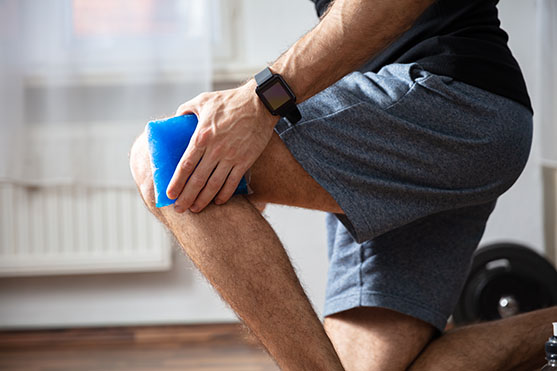
Heat applied before exercise or treatment and ice applied afterward are standard physical therapy interventions. Why? Because heat maximizes the benefits while cold minimizes any microdamage from physical therapy.
Heat expands the blood vessels in the area to which it is applied. As the blood vessels expand, more blood flows into the area, bringing with it additional oxygen and nutrients. This increases the metabolism of the tissue, allowing it to work harder.
Heat works on tissues in other ways, too. It relaxes muscles and warms ligaments and tendons, making them more flexible and elastic. That allows for increased range of motion and decreased pain in joints. Although it does not replace a gradual, structured warm-up, pretreatment of an injured area with heat allows you to get more out of your physical therapy session.
During exercise, especially exercise that pushes the boundaries of your strength and flexibility, tissues can suffer microtears. The application of cold helps reduce the impact of those tiny tears. Cold constricts blood vessels and decreases blood flow. That decreases the oxygen in the area, helping to inhibit tissue response to the chemicals that cause inflammation.
Cold also makes blood vessels less porous. Although we often picture blood vessels as solid tubes, they actually are permeable and allow fluid to flow out into the surrounding tissue in response to injury. That can cause swelling; the application of cold can mitigate this response. Another benefit: Cold also reduces muscle spasms and increases pain thresholds.
To sum up, the application of heat before physical activity loosens up tissue and prepares the body for exercise while the application of cold after physical activity reduces the body’s response to injury, whether it is microtears from a healthy workout or serious injury to overstressed tissues.
At home, use heat and a gradual warm-up before a workout, and apply cold after any strenuous activity. If you are injured, apply ice, 20 minutes on and 20 minutes off, for the first 24 to 48 hours to minimize tissue damage. If symptoms persist or you feel unusually stiff, one-on-one treatment with your physical therapist may be the best solution.









